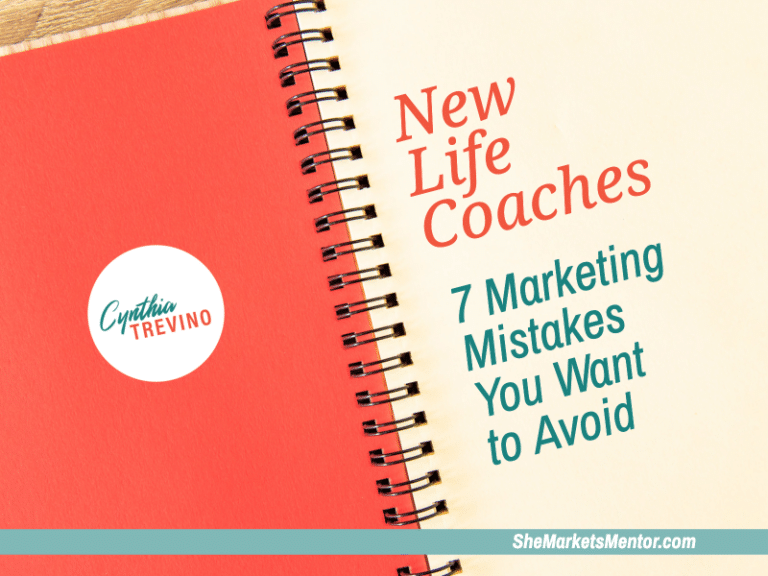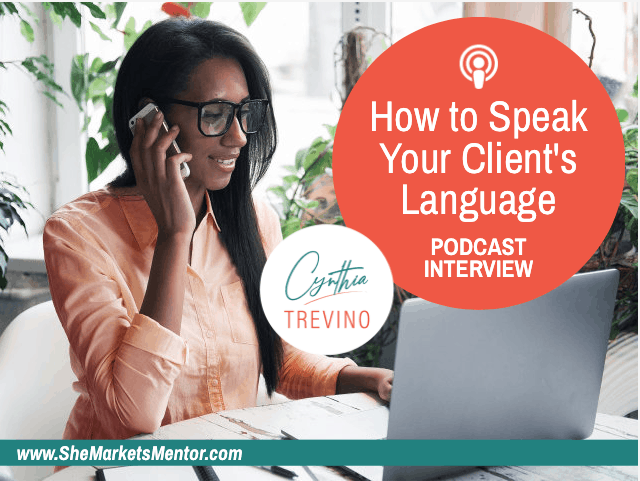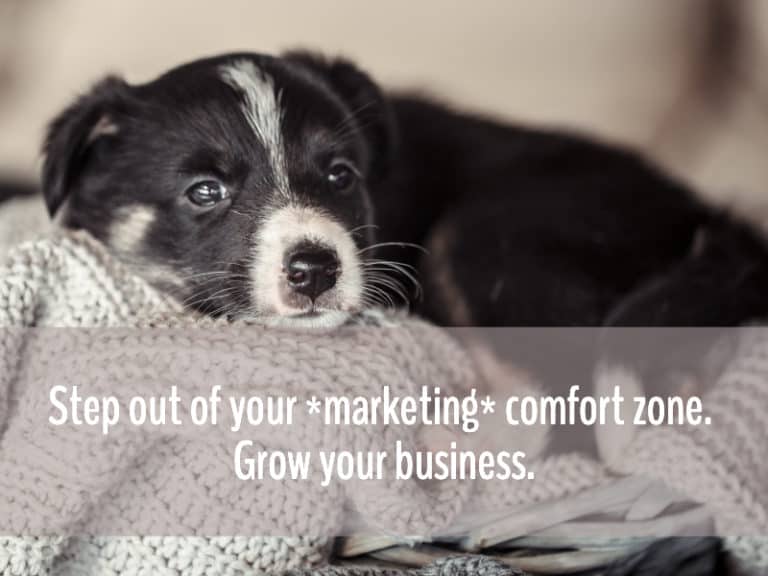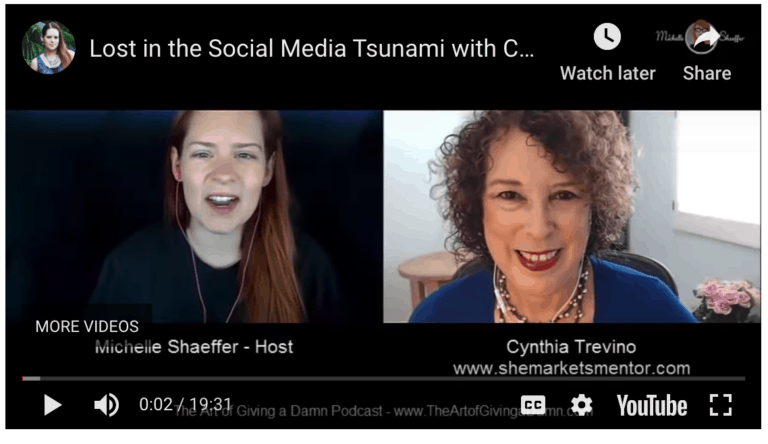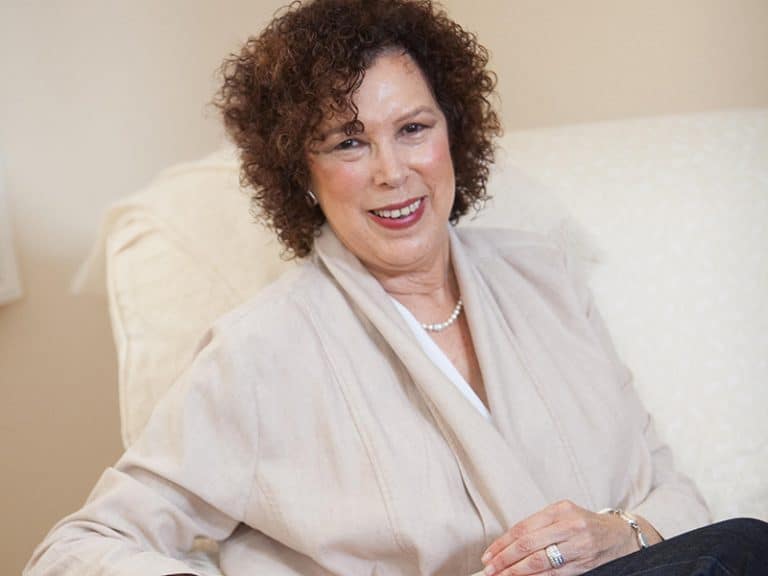Why You Must Know Your Ideal Client (Better Than Anyone Else Does)
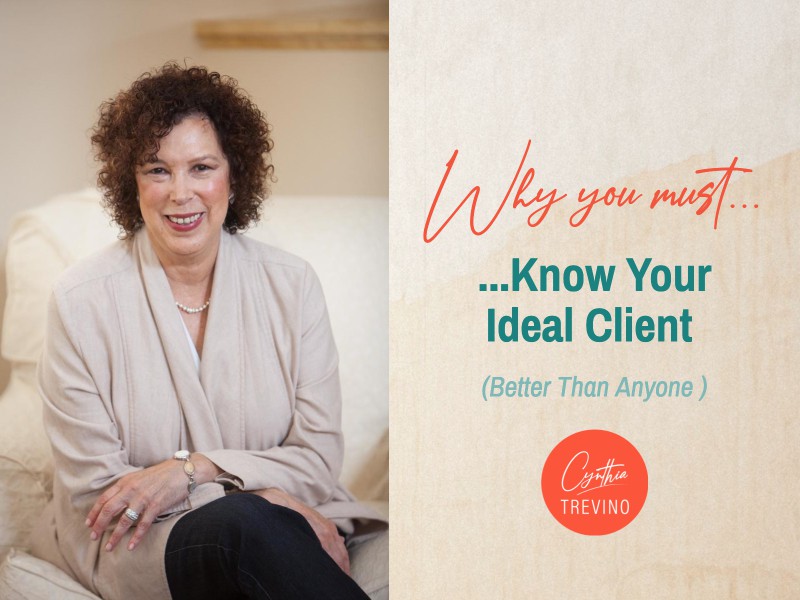
Shouldn’t you know your ideal client avatar even better?
At the risk of sounding all marketing speak-y, it’s honestly a valuable question to ask yourself.
Because whether you love, hate, or feel ambivalent about marketing your business, in order attract more potential clients with your content, you simply must deeply understand them.
If you don’t deeply know your ideal client avatar, they won’t (easily) find you, and it will be tougher to fill your calendar with the right-fit clients you want.
Really? Yes, creating content, crafting marketing messages, and sharing baby steps to your clients’ giant problems is tougher when you’re winging it. That’s why you want to know your ideal client. Deeply.
If you haven’t put your beautiful brain to work on documenting exactly who your ideal clients are, your content and messages risk sounding generic. Vanilla. Like you’re trying to talk to everyone who has the problems you solve.
They won’t know that you’re the best practitioner, expert, coach, consultant, or trainer to help them.
Your ideal client avatars will miss out on the beauty of your ability to empower them to become the best version of themselves whether that’s the best parent, leader, CEO, keynote speaker, teacher, musician, business owner, facilitator, designer…
Think of how your clients benefit from your experience as you lead them to solutions they never considered, help ease their pain, and show them how to accomplish Mt. Everest-sized dreams. Let’s not let all of that go to waste.
You want your voice, (your messages and marketing content) to be confident. You want to inspire trust, right?
A key way to build trust, is to talk directly to your specific, future dream clients. The best way to accomplish that?
Know them. Better than anyone else in your industry knows them.
So if you agree it’s worth your time and talent to get to know your dream clients, I’m happy you’re here! Today’s post shares ways to shift your mindset about how to know your ideal client, better than anyone else in your industry.
Get to Know Your Ideal Client, So You Can Better Attract Them
It’s been said many times, many ways: Everybody is not your client.
My version of this truth:
Everybody is not your perfect client.
What is a perfect, ideal client avatar? Ideal clients get the best outcomes from your products, services, and programs. You know, those wonderful folks who get off-the-charts results after working with you.
You also know that perfect clients happily report back to you that they’re thrilled with the way they were able to shift their mindsets and overcome long-standing struggles after working with you. What else do you know about them? Is it a combination of these or similar traits?
After you know your ideal client super-well, you’ll more easily write directly to them. Then, your perfect clients find your content, show up excited to do the work and they are the ones who…
- Share your values
- Are motivated, ready to learn
- Look forward to, and are open to changing
- Are prepared to let go of long-held beliefs holding them back
- Become excited to smash through old barriers
- Follow your coaching and recommendations
- Are happy to pay your invoices on time
- Show respect for you and others on your team
These are the kinds of clients you want more of because you love working with them.
And they love working with you, don’t they? Let’s explore more about your perfect clients so you can do an awesome job of marketing to reach them, shall we?
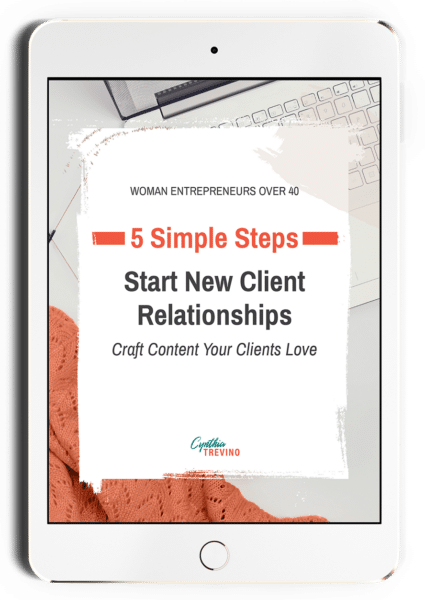
Create Client-Attracting Content
Stop spinning your wheels about the best content to create, so you can bring in clients. Get this guide and follow my simple 5-step Client Clarity System to create content your future dream clients search for.
That way, you can foster meaningful connections and pack your calendar with clients who love your work.
By signing up, you agree to this website’s privacy policy and terms and conditions. We promise we won’t send you spam. You’re welcome to unsubscribe at any time.
Target Market or Dream Client?
Now that you’re thinking deeply about your perfect, ideal client, you might say, “great, my ideal client is my target market.”
But keep reading and I’ll show you how that’s not true.
Many life coaches think, because they’re told, that a target market is all they need. I disagree big time with old school marketing here!
In fact, it drives me crazy when marketing trainers have you stop at identifying a target set of folks you want to serve. Please don’t get caught up in this myth!
You can go beyond ‘target market’ and learn dramatically more about your clients. By understanding them completely, you’ll master how to attract more of your perfect clients with your marketing.
Not only that, you’ll make the choice to make your dream client audience happy with your specific content. Why? Because you’ve done the work to add valuable inspiration (or tiny lessons) to the online world, once you know your ideal client.
Yes, it takes a bit of deep thinking, recalling, and reflecting.
The benefits? For starters, your reward is purposeful marketing and the ability to communicate with intention because you have created a firm foundation.
After that, you’ll know your perfect client better than anyone else in your field.
A key question: What separates your ‘ideal client’ from everyone else in the overall, larger market of people struggling to achieve the goals you’re expert in coaching them to succeed at?
To see how this might work for you, let’s take a look at the experience of a wellness coach we’ll call ‘Marie’.
Related: 5 Reasons to Create a Plan to Attract More Clients (Entrepreneurs, Life Coaches, Consultants)
Marie’s Know Your Ideal Client Story
Marie is a purpose-driven entrepreneur running a wellness coaching business based in Chicago.
When asked to describe her dream clients, Marie typically said that her target customer was professional women between the ages of 45 and 55, living in and around Chicago, who are overweight and overworked. Period. End of story.
The problem was, Marie ended up having prospecting conversations with lots of women who were actually in her ‘target market’. The women she met and chatted with, said they wished they could lose their extra weight, once and for all. They took Marie’s card and told her they’d call her. Or they said, sure, “Give me a call next week. You can tell me about your program then.”
Sadly, too few of them followed through and signed up for her 6-month Get-the-Pounds-Off program. Hum. Has something similar happened when you describe your programs or services to potential clients?
Marie decided she needed expert help. After all, she’d poured years of hard-won experience into her programs. She’d successfully helped scores of clients get the outcomes they wanted, and they loved her. She wanted to serve more clients so she could have a positive impact on more people and grow her business. Like you, she wanted more of the win-win.
Marie worked with a marketing coach who helped her think differently and more deeply. The coach helped her clarify who, exactly, was the kind of client she wanted to work with in her business.
She went into reflection mode.
- Marie separated the great-results-clients from all the others
- She focused on identifying past clients who had achieved the best results with her programs
- By brainstorming, journaling about exactly who her perfect client is, Marie learned a lot
Also, she got huge insights by ferreting out a list of the qualities, attitudes, and mindsets that all of her best-performing clients had in common.
How did she accomplish this? She did deep thinking know-your-ideal-client work. She replayed past conversations and interactions with her best clients. Marie scanned and reviewed old emails, texts, and letters from past and current clients.
As a result of pondering this question for a couple of weeks, Marie did a brain dump. She simply started typing onto a blank document on her computer. She ended up with a 7-page detailed document, describing her perfect client.
Now, this was not a novel, white paper, article, blog post, or story for Huffington Post. Marie’s 7-page perfect client description was simply her resource. Just for her use.
When would she use it? Each time she was ready to write a blog article or record a video for clients and future clients. Whenever she wants to be reminded of (and inspired by) what was going on in her potential clients’ world.
This Is What Marie Discovered
Marie’s clients who took action, invested in her programs, and got the life they were after, shared a striking number of similar qualities.
Even though, as you would expect, each customer’s personality and background was vastly different.
Here’s the key for Marie, that may apply for you too: not every woman who is overweight and stressed is ready to make the changes she needs to make in order to lose weight.
Not every overweight, overworked, Chicago-based woman in her forties is motivated to rearrange her schedule, change her habits, and become disciplined. They’re not all committed to rolling up their sleeves, staying the course, and doing whatever it takes to get the extra pounds off.
When comparing your client success stories with those of your other clients, does this ring true for you too?
Marie examined the attitudes and characteristics of her ‘star’ clients who were overjoyed with their results. She contrasted them to everyone else she could possibly serve.
She found that while everyone in her target market fit the description of career women ages 40 to 50, overweight, overworked—and here’s the silver bullet—her perfect person had ‘something extra’. Not surprisingly, she realized that her perfect clients are over-the-moon excited about investing in the hand holding benefits of a guided get-healthy program.
The best part was…
Marie’s ideal client is committed to following a plan led by an expert. This woman is motivated for lots of reasons, because she’s tried every meal plan, fasting protocol, exercise regimen, and cleanse out there.
It may be that she wants to feel better, get more done, and keep up with her children and grandchildren. Or she wants to look fabulous at her daughter’s wedding or her class reunion.
.

Marie Shifted Her Marketing Content
In her marketing, content, and conversations Marie began ‘speaking’ directly to her perfect person for her coaching business. By shifting both her client attraction marketing content and conversations, she began talking in a way that made it easier for perfect clients to hear her message. Marie’s content and networking conversations caught the attention of more women who fit her perfect client profile.
She had more meaningful conversations with potential clients.
Happily, she also had fewer dead-end conversations with non-ideal clients.
Marie arrived at this new level of understanding of her perfect clients because she tapped into aspects of their mindset, situation, and frustrations she hadn’t previously considered. Along the way, she developed more empathy for her perfect clients.
The silver lining: she connected with more potential clients. Marie was now tuned into her clients’ world in ways she hadn’t been before.
Tell me, are you beginning to see how deeply reflecting on your perfect client can help you envision them in a whole new light?
Knowing Your Ideal Clients’ Values Is a Giant Bonus!
After all, you want to invest your efforts, time, and talents into clients who are excited to do what’s required to make the changes they say they want. Don’t you?
Not only that, you’ve poured your heart and soul into creating world-class marketing, services, products, programs, and courses.
Here’s the deal:
Your work helps clients get unstuck, navigate barriers, and become the best versions of themselves.
Question for you: you want to craft marketing content that attracts as many of your ideal, perfect-fit clients as possible, right?
So, to craft valuable content your perfect clients can’t wait to gobble up, here’s food for thought. It’s the scoop on how to uncover your perfect client’s attributes, values, and characteristics that I promised you. It’s how you write an ideal client profile to guide your content creation.
Depending on your type of work, your clients’ attributes may include things like, they’re…
- Excited to grow their business
- Thrilled about becoming a keynote speaker
- Happiest cooking and entertaining, or teaching others how to, than doing anything else
- Committed to getting healthy no matter what it takes
- Prepared to change, become open, and even make sacrifices so they can finally meet their soulmate

Create Client-Attracting Content
Stop spinning your wheels about the best content to create, so you can bring in clients. Get this guide and follow my simple 5-step Client Clarity System to create content your future dream clients search for.
That way, you can foster meaningful connections and pack your calendar with clients who love your work.
By signing up, you agree to this website’s privacy policy and terms and conditions. We promise we won’t send you spam. You’re welcome to unsubscribe at any time.
Your Next Steps to Master Knowing Your Ideal Client
First: Be Nancy Drew!
Investigate exactly who is your, perfect, ideal client. Pull back the curtain and discover everything about them.
But you may say, “I know my ideal clients and their problems!” True, it’s awfully helpful to have a running list in your head of your perfect clients’ urgent problems, of course. Most women business owners do.
That said, you can go even deeper to understand the challenges your people are obsessing over. Happily, you can gain insights that other experts in your field fail to consider.
As a perfect client detective, go beyond your clients’ problems to uncover their motivations, dreams, desires, drivers, and values. This sets you apart from others.
These insights become your secret sauce because you’ll know things others don’t about your ideal people.
You’ll easily craft blog articles and social media posts that tap into your people’s concerns. When putting together marketing materials, you’ll naturally write and talk about issues that matter most to your perfect clients, because you’ve done your homework!
How do you start? Glad you asked, let’s continue.
7 Powerful questions, to better know your ideal client avatar
- What characteristics make your perfect client different from everyone else who has the problems you help solve? (Examples: Think about traits like, they’re introverts, lifelong learners, complete newbies, overachievers, insatiable adventurers…)
2. What motivations and mindsets set your successful clients apart from everyone else in your target market? (Ex. They can’t wait to get started, convinced they cannot solve this on their own, respectful of your expertise, happy to follow your coaching…)
3. What is the spark that your ideal clients seem to have? (Ex. They’re creative, relentless, work fast, strive to be on the leading edge, push the envelope to take care of families, employees…)
4. What unique attributes do they display in how they show up? (Ex. Are they energetic, experimenters, curious, focused, or something else?)
5. What is special about them that tells you they’re open-minded about following your program or using your services? (Ex. They’re eager to learn, ask insightful questions about their next steps…)
6. How can you tell they are willing to do the necessary work to get the results they’re seeking? (Ex. They’re always on time, ask for clarity when they don’t understand something, ask for the next step…)
7. What are their values? They likely share many values with you. (Ex.: They’re outgoing, community-minded, tireless volunteers, voracious readers, endlessly active, collaborators, appreciative, they lift others up, family-oriented, loyal…)
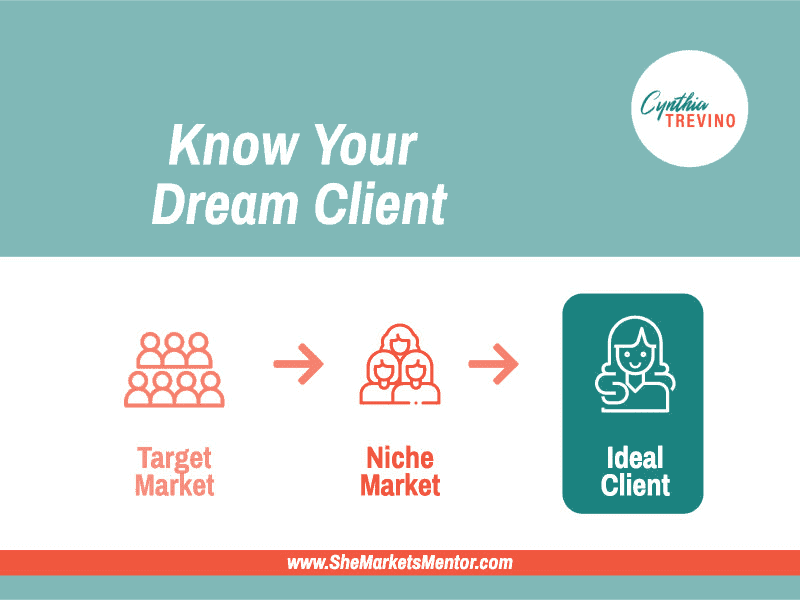
Now: Create Your Perfect Client Description
This is a surefire way to know your ideal client better: document everything you know, learn, and discover about your ideal client. Your dream client. The perfect client you love serving.
Your perfect client profile can be pulled together in any style you like…
- Rambling explanation in Google docs
- Series of anecdotes
- Set of direct quotes from past client conversations
- Long list of bullet phrases
- Set of phrases that describes them
- Story
- Profile
- Multiple stories
- Any combination of the above
This is your dream client description. It is your tool, resource, handbook. You can print it or keep it on Google drive or your computer.
Here’s my recommendation, keep your dream client description (story) in an easily accessible file because it is not a one-and-done project.
Your client description is a living, breathing document. It will morph, evolve, and change as you do as a coach, consultant, teacher, and expert.
You’ll use your description to create:
And more.
You won’t be surprised, your perfect client expands as your business expands.
Related: 5 Reasons to Create a Plan to Attract More Clients (Life Coaches, Consultants)
Conclusion
A final thought about resistance. You may feel resistant and want to skim over or skip the deep reflection I’m recommending. It happens all the time.
I work with dedicated, heart-centered women who love their work, thrive on helping clients get unstuck, and are over-the-moon happy every day that they get to be their own boss.
And yet, when they’ve hit a barrier in attracting enough of the clients they want and work with me, they agree it’s time to do the reflection. Please work through it. It’s worth your effort to know your ideal client even better.
Find a trusted business person to talk it over with. Share the questions listed here, what you’ve come up with, and where you’re stuck. No worries if it takes you a few iterations, it always does.
Don’t expect that you must sit down for an hour, and completely document your perfect client. No one does that. Your perfect client document is a living, breathing, and evolving resource. Your ideal client story (description) develops over time.
I hope you will put these tips, questions, and explanations to work for your business. I’m sending you every good wish to make this approach your own. It’s vitally important because your perfect, ideal clients need you.
I say this to my private clients and you must keep it in mind.
Your future clients are out there, on social media, searching Google for answers/help/a bright spot because they’re suffering with problems. Struggling to achieve dreams. They can really only learn, resolve, and move forward when they connect with you.
Make it easier for your ideal people to find you!
Be Unstoppable,
~ Cynthia
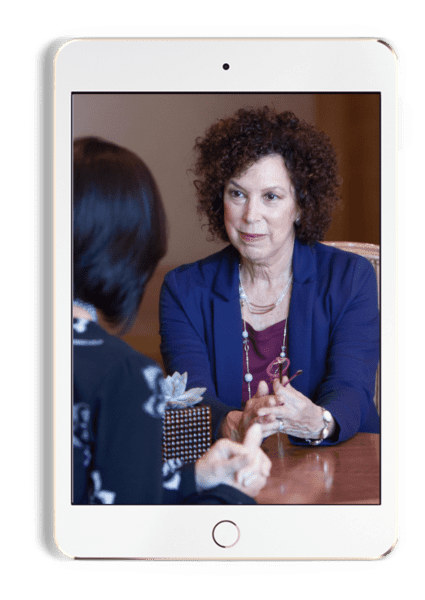
What if you could finally create content consistently?
If creating your marketing content has felt like a chore, a time-suck, or a massive mystery, you may have given up on content entirely.
But the truth is:
Content is key to attracting ideal clients and filling your programs. So don’t give up!
If your content ideas are buried in your beautiful brain, you want a process to help your words flow.
You want specific actions to implement so that the content you create stands out to your dream clients.
When you schedule a free Clarity Call, together, we’ll uncover your personalized marketing content actions. That way you can impact more clients. Click below to set up your FREE Clarity Call.

